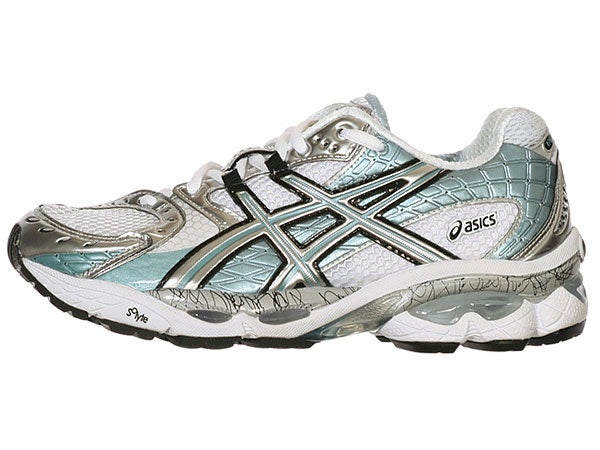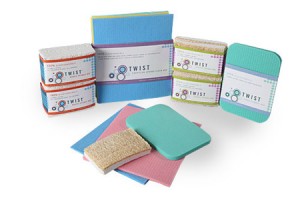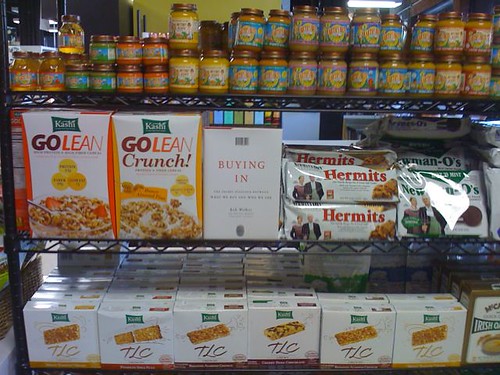A recent comment to one of the entries in Murketing.com’s Flickr Interludes series has me thinking. Commenter Angel McClinton wrote:
I hope you will start a youtube group to observe Murky video as well.
Interesting thought … but what would that consist of, exactly?
I do the Flickr Interlude stuff because I happen to enjoy Flickr browsing; want to share the cool stuff I find there that is on-point with Murketing.com; and like the idea of adding visual excitement to the site. So it’s all pretty natural, I think. (“Organic,” as they say.)
Video is tougher for me. I don’t spend a lot of free time looking at YouTube/Vimeo/etc. stuff (though obviously I get sucked into things). And I positively hate the way embedded videos, especially YouTube videos, look on Murketing.com or my other sites. (I don’t think I’ve ever embedded a YouTube video here, for that reason.)
Still, I guess I can see the value in collecting “murky” videos — which I won’t bother to define. [Note: The commenter links to and I guess is associated with something called Media Mojito, which I haven’t looked at closely, but may be some kind of platform for branded content, I’m not really sure. So factor that in to the question I’m about to ask.]
So if I did do something video-oriented, what would be an approach that would be interesting and valuable … to you I mean?
Whoever you are.

A friend of Murketing writes:
The other day I bought new running shoes, Asics. I like a certain model (Nimbus) which are super comfy, but they are designing progressively uglier, and this latest incarnation is just hideous, with these weird scribbles along the bottom. It also comes in pink and purple (’cause that’s what we gals like).
I like Asics not out of true brand loyalty, but because the shoe does fit me well and is most comfortable. But this tme I nearly bought something else because these are really just plain ugly; I had a chat with the clerk who agreed and said, in fact, every customer is saying the same thing. It’s like Asics has some death wish or something, to drive away customers.
It’s just peculiar how in the running kicks market, some brands never look ugly, and soem seem to go out of their way to look ugly. I guess my question is how loyal are people — can you make a product so aesthetically undesirable that even the faithful will ultimately go away?
Interesting question! Setting aside whether Asics has a design death wish (although if you have opinions on that, let me know), is there a point at which a product is just ugly you’ll switch to a different one even if it means sacrificing something like comfort or performance?
 One of the inevitable side-effects of the apparent interest in eco-friendly products is the emergence of greener, or less harmful, or whatever, alternatives for even mundane items that you probably don’t think about too much. Or at least, I don’t remember ever thinking about sponges too much — let alonethinking about whether or not my sponge decisions were good or bad for the environment.
One of the inevitable side-effects of the apparent interest in eco-friendly products is the emergence of greener, or less harmful, or whatever, alternatives for even mundane items that you probably don’t think about too much. Or at least, I don’t remember ever thinking about sponges too much — let alonethinking about whether or not my sponge decisions were good or bad for the environment.
And yet, here (via Coudal) is Twist, which informs us:
Making a sponge is a very challenging process, and one that only a handful of producers undertake. … This process can lead to a lot of waste. Billions of sponges are produced every year. An industry that big has an impact on the world around it.
Thus Twist’s Naked Sponge #55 boasts “no dyes and 100% cellulose.” Its Euro Sponge #10 is “durable, biodegradable, and (dare we say it) stylish.”
Perhaps I’ll look into this more later, but in the short term, I will start feeling guilty about my reckless sponge consumption, right away.
Recently Business Week ran a big package on how companies use the Olympics to show off new innovations they hope will go on to attract more widespread consumer embrace. This morning the WSJ has a story about Michael Phelps that includes this bit suggesting sometimes no particular innovation is required, and mere exposure is enough:
Even the white Speedo parka that Mr. Phelps wore to the starting block before his races prompted consumer demand. Speedo had no intention of selling that item to customers. Now it’s begun ramping up production, says Mr. Brommers, the Speedo marketing vice president.
“People want a piece of history here,” says Mr. Brommers. “We’re trying to get this stuff out the door as fast as we can.”
 WORKER SOLE
WORKER SOLE
A simple shoe for Chinese laborers gets made over for Western consumers
This week in Consumed, a new addition to the centuries-old effort to communicate between East and West. Curiously, it’s a consumer product:
Ospop sneakers. Yes, they’re made in China by Chinese workers. But more unusually, and more to the point, they are inspired by Chinese workers. Specifically, Ospop sneakers are based on a design widely worn by such laborers, but with higher-quality materials and structural improvements meant to appeal to a Western audience — one that is, not incidentally, willing to pay $75 for a pair of sneakers.
Read the column in the August 17, 2008, issue of The New York Times Magazine, or here.
Consumed archive is here, and FAQ is here. Consumed Facebook page is here.
NYT story looks at the role that ad campaigns played in making debt (home equity loans) ets., less scary to consumers; ad execs now say ” society’s attitudes about debt shaped the ads, not the other way around,” but I bet they didn’t say that in pitch meetings ….
The Wall Street Journal recounts The Olive Garden’s “mixed feelings” about “rogue brand ambassador” and Hugh Heffner harem member Kendra Willkinson; traffic-hungry blogs pile on ….
In survey, 73% say Starbucks coffee is too expensive ….
Living Oprah, blog of 35-year-old artist, performer and writer in Chicago: “For one year, I will live as Oprah advises…. Additionally, I’ll be charting the cost of living as Oprah prescribes. Will the costs — financial, time spent, energy expended — be worth the result?” …
Report “focuses on methods of advertising food to kids [via] spreading messages through social networks, and urges lawmakers to restrict junk food advertising to kids online” (via Commercial Alert) …
Anti Advertising agency on plan to limit outdoor advertising (removing 40k billboards) in Buenos Aires….
A political ad making fun of Barack Obama uses the Jackson Browne song “Running On Empty,” and Browne, “incensed,” is suing. …
Shell newspaper ads in the U.K. describing oil-exploration and refining projects as sustainable-energy initiatives spark complaints from World Wildlife Federation, and Britain’s ad-watchdog agency forces the company to withdraw them …
Amusing yet earnest video by Municipal Arts Society about news racks around NYC in clear violation of various laws …

If I were in charge, the American flag would be replaced with a red-white-and blue foam Number One hand. We’d be the only country represented by a novelty item. How cool would that be?
At the very least, I think Murketing.com should have its own foam Number One hands. Some day, maybe.
Uh, anyway, I’m going to be out of pocket today, so I invite you to read about the history of the foam number one hand on Designboom. (Via Freakonomics blog.) It was invented in Texas! And much more recently than I’d realized …
When I have more time I’ll have to see if anybody’s done the historical research on multicolored wigs.
Posted Under:
The Designed Life by Rob Walker on August 14, 2008
Comments Off on Design appreciation: Foam Number One hand

If you want to get a pic in the Murketing Flickr group highlighted here on Murketing.com, this is a) cheating, and b) encouraged.
Save
Adverblog is the latest to ask the familiar question:
What’s the value of Twitter for a brand? It’s just a question of feeling cool and up to speed with the 2.0 era? Or there is (or there could be) more? Is there any brand out there using Twitter fully exploiting its conversational potentials or is it just another broadcast channel?
In a way, the overheated emotions about Twitter are a good example of the medium/message problem: It’s just another way of potentially expressing something, and that is inherently less interesting (to me) than what’s being expressed. I’ve been asked about Twitter a lot, and on precisely one occasion has the question been interesting. It was in the recent Q&A for Crafty Bastards, and if you have read that then you already know what I was asked and what I said, but if not, here it is, answer after the jump:
Q: What do you think of Twitter as a marketing tool? Are people more likely to buy from Zappos because they know what the CEO is having for dinner? Please continue…
A weird irony of the New Interactive World or whatever is that nobody reads the letters to the editor anymore. Except me! Check out this: Reacting to the David Brooks column I mentioned recently and cast as an example of the media/message problem, a guy who was actually in an iPhone ad wrote to the NYT and said in part:
During the filming, I spoke with the director of the ad, Errol Morris, for 30 minutes about the iPhone’s effect on human interaction and the philosophical implications of its technology on modern culture. We discussed what the iPhone revealed about mankind’s narcissistic tendencies and the vital importance of human connection in today’s world of electronic communication.
Needless to say, none of this made it into the commercial. In addition to recommending you read this guy’s letter, I ask you: Isn’t it weird that Errol Morris makes ads at all?
If you’ve somehow managed to miss the endlessly repeated conventional wisdom about “Obama as brand,” Ad Age has a recap, without a hint that anybody might question it — but with a new twist.
Neil “Millenials” Howe pops up to reiterate the assertion (noted here, and met with skepticism my Murketing readers) that he made in a recent Brandweek interview: Gen Y digs a big brand. And Obama is a big brand:
According to Mr. Howe, Gen Xers required niche marketing: “If too many people liked something, it wasn’t cool.” But mass brand experiences, from the iPod to Harry Potter, appeal strongly to millennials, who have been shown to be a more communal, pro-social generation than their predecessors.
While critics see Mr. Obama’s penchant for mass gatherings as arrogant, Mr. Howe finds it perfect for millennials: “They’re more civically connected, and they find strength in numbers.”
I’ve said to a number of people in casual conversation that crowds will now line up for an iPhone the way people used to line up for the midnight release of some noteworthy musician’s new CD. David Brooks gets at something related to this in a column recently (I linked to it already last week, in the linkpile rotation at right) in which he argued that “over the past few years, there has been a tectonic shift in the basis of good taste.”
He talks about 1400 to 1965 as a long reign of a hierarchical version of good taste; this was followed by 40 years when “status rewards went to the ostentatious cultural omnivores.” And now?
On or about June 29, 2007, human character changed. That, of course, was the release date of the first iPhone.
On that date, media displaced culture. As commenters on The American Scene blog have pointed out, the means of transmission replaced the content of culture as the center of historical excitement and as the marker of social status.
Now the global thought-leader is defined less by what culture he enjoys than by the smartphone, social bookmarking site, social network and e-mail provider he uses to store and transmit it….
Today, Kindle can change the world, but nobody expects much from a mere novel.
Whatever you make of the specifics, I think that from a broad perspective he’s onto something here, a kind of medium/message problem: There’s a lot of celebration of various media that will bring us interesting new messages that the old setup squelched. There’s a lot less evidence that the messages we get now are really that much better (as opposed to different).
You might disagree, but for the moment I don’t want to get bogged down in that specific argument.
Rather what I want to say is that I’m thinking (hoping?) that what Brooks is talking about isn’t a tectonic shift, but a phase. I think we’re having a little trouble sometimes figuring out the relationship between technology and culture — which shapes which, and how. But at some point the focus will shift from “imagine the potential” to “here is the new cultural expression that has emerged that is exciting on its own, because of its message, not because of the medium.”
Meanwhile, I poked around that American Scene blog Brooks mentioned, and it’s pretty interesting. I think maybe two of the posts he’s referencing are this one and this one. Worth reading for yet another point of view.




 "
"


 WORKER SOLE
WORKER SOLE
















 Kim Fellner's book
Kim Fellner's book  A
A